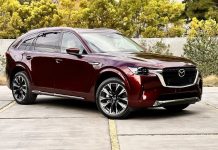Several state governments are going to a four-day workweek to save money. Some are issuing IOUs to taxpayers in lieu of tax refunds. Extraordinary times call for extraordinary measures.
So how come the same breaks aren’t being cut for the auto industry – and car buyers?
Why not, for example, at least temporarily suspend federal requirements that force the automakers to build 3,000 pound, 30 mpg “economy” cars that can’t match the fuel efficiency of the mid-sized cars of 20 years ago and which cost thousands more than they need to?
You can thank Uncle Sam – well-intentioned, as always – for the fact that if you want a car capable of 40 mpg or better, your choices are very slim, or very expensive. Only two standard (non-hybrid, not diesel) cars make the cut – the 2011 Ford Fiesta and the new Chevy Cruze. Most modern “economy” cars are in the 35-38 mpg range.
Many come in closer to 32 mpg.
Back in the early ’80s, it was not uncommon for economy economy cars to get 40-45 mpg. A few – such as the 1982 Dodge Omni – were in the 50s on the highway. The Mercury Lynx got 44 on the highway, the Chevy Cavalier 42 mpgs. Keep in mind, this was achieved with Disco-era technology such as four-speed manual transmissions (no fuel-saving overdrive, as every modern car gas) as well as carburetors and primitive computer controls.
So, where’s the beef? Shouldn’t a 2011 model year economy car be significantly more fuel efficient than an ’80s-era economy car?
Doesn’t “progress” mean we go forward?
What happened?
Government happened.
Over the past 25 years, numerous regulations have been passed into law mandating that new cars be made ever “safer,” both in terms their ability to withstand a crash and also in terms of their ability to avoid having a crash to begin with. The typical 2011 car – including economy cars – has at least four and typically six air bags (to cushion occupants in the event of a crash) as well as electronic aids such as anti-lock brakes and stability/traction control to try to prevent the wreck from happening in the first place.
As a result of adding more structural beef – as well as equipment – the weight of the average “economy” car has increased by 500-800 pounds. The extra weight, in turn, requires larger (or at least, more powerful) engines to maintain acceptable acceleration. And larger/more powerful engines burn more fuel.
The nut of it is that while modern cars are without question safer, they’re equally without question less economical.
Given a quarter-century of technological improvement (everything from five and six-speed transmissions to very sophisticated engine management systems that were not around in the early ’80s), it would be simple – and cheap – to build a 50 mpg economy car today.
If the government would allow it.
Merely suspend federal bumper impact and “passive” (air bag) safety requirements. Let the automakers build 2,000 pound, 50 mpg cars that cost $8k – which they could easily do, if allowed.
But such cars would be unsafe!
Well, that depends on how you define “safe.” And how much safety you think the government should be forcing people to buy. The ’70s and ’80s – era of genuinely economical cars – were not a time of mass carnage. True, if you wrecked an ’82 Omni your chances of being hurt – or hurt worse and maybe even killed – would be greater than would be the case if you’d been driving a 2011 (and federally approved) Toyota Yaris. If you wrecked. But maybe – probably – you’ll never have a serious accident. Most people don’t. Some of us – many of us – stand a very good chance of never being involved in more than a minor fender-bender during the entire course of our driving lives. It is a statistical fact.
Perhaps the very real everyday fuel savings (and up-front savings on the car itself) are worth more to you than the theoretical “what if?” safety advantages of the modern, government-approved car?
The key phrase in the last sentence is,“worth more to you.”
Shouldn’t it be your decision – not Uncle Sam’s? Why can’t we – like the double-chinned wonders running the government – weigh the pros and cons of something and come to a conclusion that best meets our particular needs? And does anyone doubt that what America – what the car industry – needs very much right now is affordable, very high-mileage cars?
In a single stroke – and with not one cent spent – President Obama could resuscitate the U.S. car industry and massively decrease the nation’s annual fuel consumption. Smaller, lighter cars would have another good effect, too. Our highways would take less of a beating – and need fixing less often.
In so many ways, we’re being forced to confront realty – economic and otherwise. It should be no different when it comes to the cars we’re allowed to buy. The plain truth is out of work and financially struggling people cannot afford $41,000 hybrids (like GM’s Volt) and even $20k “economy” cars are not particularly economical.
Why should you and I be told by know-it-all (and invariably very rich) DC politicos that we must have “x” and “y” – invariably at our expense? The principle behind this has always been obnoxious. But now, it is unaffordable, too.
We can have uber-safe cars that cost $15-$20k. Or we can have cars that get 50-plus MPG and cost $8k. We can’t have both.
Whose choice – whose business – should it be?









